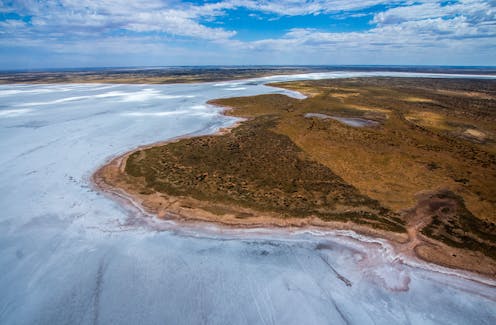Kim Mahood's Wandering with Intent redefines the Australian frontier
- Written by Tony Hughes-d'Aeth, Professor, Chair of Australian Literature, The University of Western Australia

Kim Mahood came to prominence with the publication of her first book, Craft for a Dry Lake[1] (2001), which detailed her efforts to reconnect with the land of her upbringing, a cattle station in the Tanami Desert.
Her journey was triggered by the death of her father, who was killed in a helicopter accident while out mustering in 1990. Craft for a Dry Lake is a mesmerising and prismatic account of a journey that folds together the author’s memories and her father’s letters and records. It is one of the defining works of memoir in Australian letters.
Review: Wandering with Intent: Essays - Kim Mahood (Scribe).

















